Uncompromising fighter, unyielding defender of democracy, melancholic - of rare sensitivity - poet, but also endowed with a heart and soul forged of steel, uncompromising in his beliefs, consistent in his principles, brave in torture, uncompromising in politics, "beautiful as a myth", this was Alekos Panagoulis, a symbol of resistance, a slogan of hope, a sun in the darkness, an eternal commitment, a hero of those that every generation needs to hold on in difficult times and not lose heart.
Today, 83 years after his birth (2/7/1939), Magazine dedicates a few lines to his life, his journey, his death and his legacy, in the hope that his example will live on, not be forgotten and continue to inspire. "Panagoulis lives". This is what the hundreds of thousands of ordinary people shouted 46 years ago on the day of his funeral, which turned into a massive protest rally in the streets of Athens, wanting to honor the one about whom the junta D. Ioannidis had said, addressing the torturer Theofilogiannakos:"It seems not you also learned that one in a hundred thousand does not speak and this is his case".
CENTER UNION, POLYTECHNIC, FANTAROS, LIPOTAKTIS

Panagoulis was born in Glyfada, having origins from Ilia (on his father's side, who was an officer in the Greek army) and from Lefkada (on his mother's side). A politicized and conscious democrat from a young age, he followed the Center Union of George Papandreou and joined the party's youth (ONEK). When he finished school, he studied at the National Technical University of Athens, in the Department of Mechanical and Electrical Engineering and then did his military service.
There he was found by the coup of the colonels on April 21, 1967, an infantryman in the 85th Infantry Regiment, in Veria. Very quickly he deserted and founded the "National Resistance" organization, as well as its militant wing, LAOS (People's Resistance Sabotage Organization). He then fled to Cyprus, where he came into contact with political actors of the island, seeking their help and support in the resistance against the junta, while at the same time drawing up action plans, which he intended to implement as soon as he returned to Greece.
THE ATTEMPTED ASSASSINATION OF GEORGIOS PAPADOPOULOS

After a few months, he secretly returned to Athens and with close associates, began planning the assassination of George Papadopoulos. Everything was prepared for the morning of August 13, 1968, on the coastal avenue of Souniu, specifically at the 31st kilometer, on the daily route taken by the dictator and his entourage from his summer residence in Lagonisi to the capital. Two motorcycles were leading, Papadopoulos' car was following and the procession was closed by the car with the police officers.
The spot was rigged with explosives, Panagoulis took a position behind some rocks near the sea, to detonate the device, but had to change position, because the cable was tangled and did not reach where he was hidden. He didn't have good visibility from the new spot, so when the phalanx passed he pressed the button a second later than he should have and Papadopoulos' car passed the trap unscathed. The attempt had failed and the worst was yet to come for its initiator, who was arrested a few minutes later by the gendarmes who had cordoned off the area.
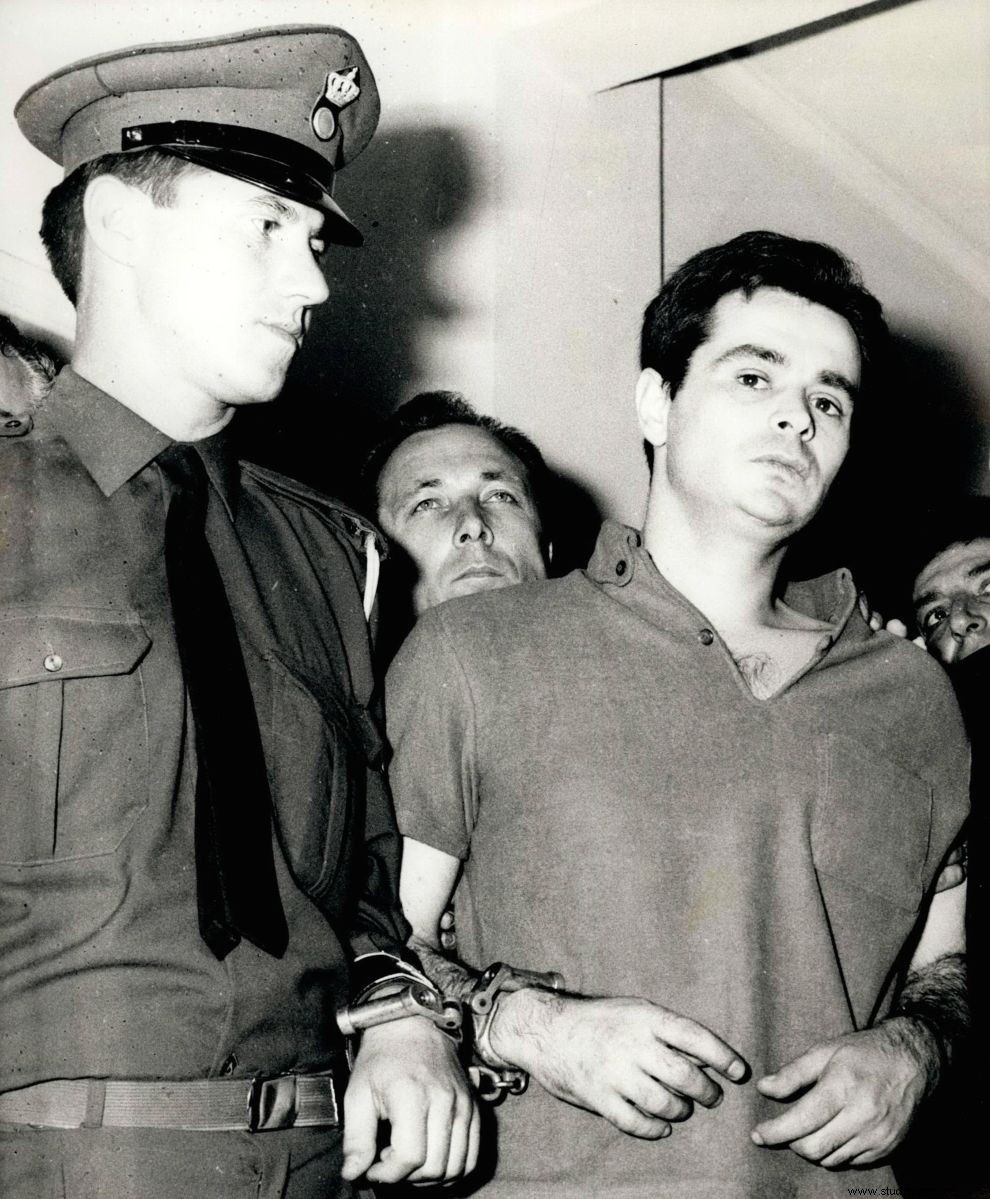
The original plan had not worked. It is assumed that Panagoulis' comrades would throw thousands of bent nails in various parts of Athens, which would lead to hundreds of immobilized - due to flat tires - cars creating traffic chaos on the streets, some others would throw Molotov incendiary bombs in Lycabettus, in Filopappos, in the Field of Areos and the National Garden, which would cause fires, with the Fire Brigade unable to reach them and the police being forced to throw all their forces there, thus facilitating Panagoulis' escape.
But none of this happened, since everyone hesitated at the last moment. Even the gas station attendant who was waiting for him in a nearby cove left immediately after the explosion, before Panagoulis could get there. Who, however, did not say a word during his arrest, his identity became known two days later, but what had made Papadopoulos more furious was that the explosives that had been used in the attempt had arrived in Greece in diplomatic bags of his Ministry of Foreign Affairs.
THE TORTURES OF THEOFILOGIANNACOS

The almost "tyrant killer" was immediately taken to the ESA and his interrogation was taken over by one of the regime's cruelest torturers, Major Theodoros Theofilogiannakos, notorious for his methods. The reason given to Panagoulis himself:"From the first moment, while my hands were tied behind my back, he started to burn me with his cigarette, pull my hair and hit my head with his fists. The interrogation began escalating from the area of the punches, the phalanx and the whippings, even the area of sexual torture".
Theofilogiannakos repeatedly hit him all over the body with a cable, while he was in front when two others, also notorious torturers, Mallios and Babalis, had inserted an iron needle into his urethra, heating it to cause even more pain. Panagoulis was transferred a few days later to the 401 military hospital, in a comatose state (due to his refusal to take food), chained to his bed. The preliminary investigation report of Theofilogiannakos was drawn up at the beginning of October and was made public on October 20, 1968.
THE COURT AND THE DEATH SENTENCE

A few days later, on November 4, the trial of Panagoulis and 14 other members of the organization who had been arrested in the meantime began, by the Athens Emergency Military Court. There the main accused, clearly exhausted from the torture, refused to name any of his accomplices and took full responsibility for the assassination attempt. The court's decision was announced on November 17. Panagoulis was sentenced twice to death, while most of the other defendants received heavy sentences (three of them were acquitted).
Lefteris Beryvakis (later MP and minister of PASOK governments) was sentenced to life imprisonment, while another later PASOK official, Stathis Iotas, received a ten-year prison sentence. Frenchman Denis Langlois, representative of the International Federation of Human Rights, who was present at the trial as an observer, said of the court's decision:"This is a true political assassination, intended to cover up the weakness of a regime, which is completely challenged by the revolutionary reactions of the Greek people".
THE INTERNATIONAL MOBILIZATION AND THE DYEING HELL

The execution had to be carried out within 72 hours, unless a pardon was granted, but despite pressure from his lawyer, Panagoulis had categorically refused to make such a request. Ultimately the death penalty was not carried out, due to the unprecedented mobilization of international public opinion and the global outcry against the colonels, expressed through popular protest rallies, interventions by parties and organizations, speeches by governments and public appeals by figures such as the UN Secretary General , Ou Thad and Pope Paul VI.
Panagoulis was transferred to the prisons of Aegina and from there to the prisons of Boyatiou (today's Agios Stefanos, Attica), no longer considered to be on death row, but with the torture continuing on a daily basis. A few months later, he met Giorgos Morakis, a newly arrived prison guard, who helped him make his first escape in June 1969. Panagoulis found refuge in the house of his former partner, Takis Patitsa, but he turned him in to the police (collected 500,000 drachmas), which arrested him, taking him back to Boyati.
THE ESCAPE ATTEMPTS AND THE "BLOODED" POEMS

There, Panagoulis did not stop for a moment to think of a new escape and started a hunger strike, asking for a basin with a cistern to be installed in his cell. The new director of the prisons, Nikolaos Zacharakis, who did not want to be blamed for the death of such an important prisoner, granted his request and then Panagoulis began to dig out the damp-corroded wall with a spoon, while removing the plasters and soil , throwing them into the basin and pulling the cistern.
On November 18, he managed to open a hole in the wall, but as soon as he came out, he saw Zacharakis with guards waiting for him. Back to the cell with merciless wood. In February 1970, he was transferred to solitary confinement, in a specially designed cell, measuring 3 by 1.5 m, with half of it in the ground, like a tomb. Two months later, on April 9, 1970, his straw mattress caught fire (considered an assassination attempt on his life), he was extricated, but initially refused to take him to hospital, he fell into a coma, doctors struggled to convince the prison guards to take him to hospital and finally he miraculously survived, after they found 92% carbon dioxide in his blood.
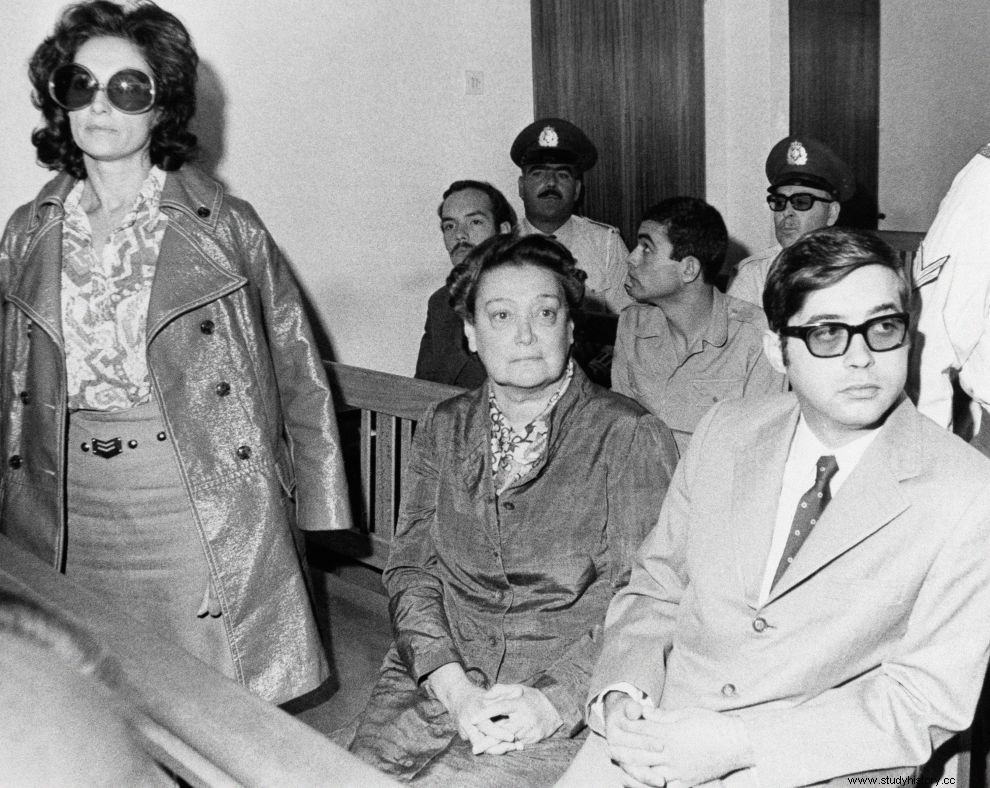
The attempts to escape did not stop, his only way out was the poems. He continued to write even when all stationery was taken from him, pencil became his blood and paper the walls of the cell:"Struggles begin, new struggles, guides of hope the first dead. No more tears, the graves are closed, the fertilizer of freedom the first dead" (composed and recorded by Mikis Theodorakis in 1971 in London). After Boyati, he was transferred to the Military Police Training Center (KESA) in Goudi, where for six months he was not allowed to court even once.
There he met Corporal Dimitris Staikos and convinced him to help him escape. The plan was complicated and difficult, but Panagoulis would also have help from his friends outside the prison. On the night of August 30, 1971, two cars were waiting outside KESA and on Mesogeion Avenue to pick up Panagoulis, but Staikos informed the police and they were all arrested. A month later, they were tried at the Athens Military Court, which imposed prison terms on Amalia Fleming (16 months), Kon Androutsopoulos (15 months), Athena Psychogiou (14 months), Kon Befakos (13 months) and to John Skelton (7 months suspended).
MEETING ORIANA FALATSI

Finally, in August 1973, Panagoulis was released, due to the general amnesty granted to political prisoners by the junta, in an attempt to virtual liberalize the regime. Soon after, he had an encounter in Athens, which marked the rest of his life. The Italian journalist Oriana Fallaci had done everything possible to secure an interview with him and finally succeeded. That first contact was decisive for both of them, they fell in love with each other and began a relationship that was only stopped by death.
Their meeting was beautifully described by Fallaci herself in her book Un uomo, published in 1979:"I was waiting for you. Come. You took me by the hand, pulled me away from the crowd, you led me down the hall to a room with a wardrobe that had been converted into an iconostasis. Images of Christ, the Virgin Mary, saints and lighted candles, censers, liturgical books. In the opposite corner a bed covered with Greek books. Above in the books a large bouquet of red roses. You took it, happy, gave it to me:For you. For me? Yes, for you".
SELF-EXILE AND MEMBER WITH EC-ND

It was in that interview that Panagoulis told Falatsi his famous phrase:"I did not seek to kill. I am not capable of killing a human being. I sought to kill a tyrant." Soon after, they left Greece together and ended up in Fallaci's hometown, Florence, where Panagoulis, true to his cause, began organizing resistance groups against the colonels. The Polytechnic had already dismantled the foundations of the junta and its definitive fall in the summer of 1974, found Panagoulis returning to Greece.
He immediately reconstituted EDIN (Hellenic Democratic Youth), of which he was the leader until his death. In the first post-colonial elections, on November 17, 1974, Panagoulis was elected a member of parliament in the second district of Athens, with the Union of Center-New Forces (EK-ND), setting as his primary goal the revelation of those politicians who had collaborated with the junta and the their isolation from the political scene. His investigations and his public complaints brought him into a rift with his party, since he claimed that he had irrefutable evidence for the cooperation of Dimitris Tsatsos (also an EK-ND MP) with the regime of the colonels.
THE "SINFUL" FILE OF EAT-ESA
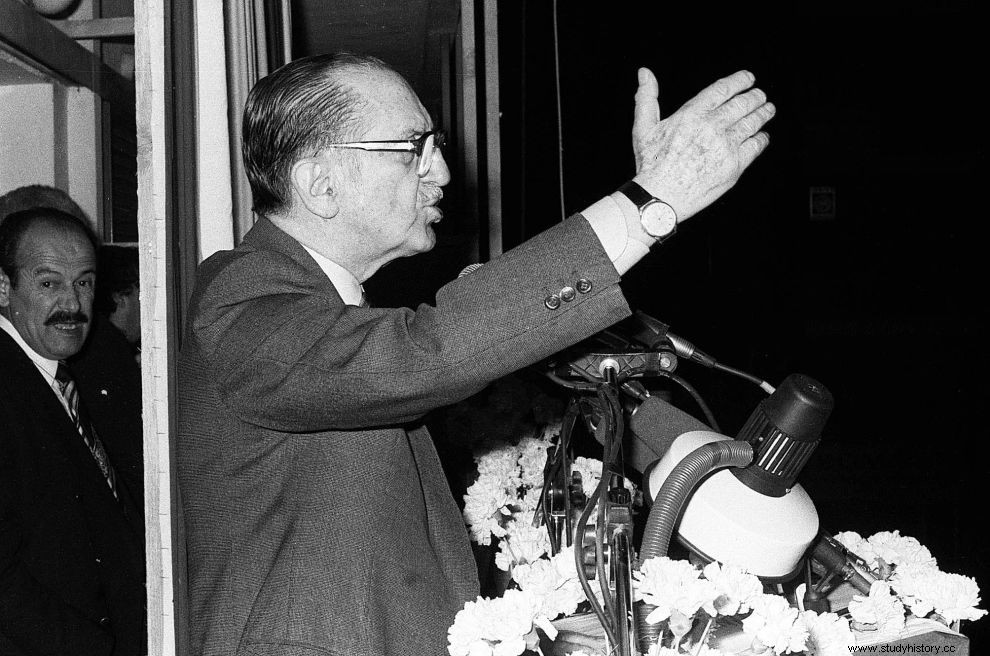
Refusing to coexist in the same political space with the "traitor", as he called him, he resigned from the Center Union, remaining in Parliament as an independent MP. He persisted in his complaints and came to an open confrontation, both with D. Tsatsos and with Evangelos Averof, then Minister of National Defense. He received many threats to his life, strangers repeatedly broke into his office, and there was no lack of political pressure to stop his threats to publish the results of his research. But he himself had committed to a substantial and in-depth cleansing of democracy.
Panagoulis, continuing to search, got his hands on part of the ETA-ESA (Special Investigation Department of the Hellenic Military Police) file and decided to publish it in newspapers from April 19, 1976. Inside the file were lists of resistance fighters, reports and police reports and various other documents incriminating politicians who had collaborated with the junta. A few days after the start of these publications in the daily press, the military prosecutor, Michalis Zouvelos, ordered them to be stopped, so that their validity could be checked.
DEATH IN THE PREMIERE OF 1976
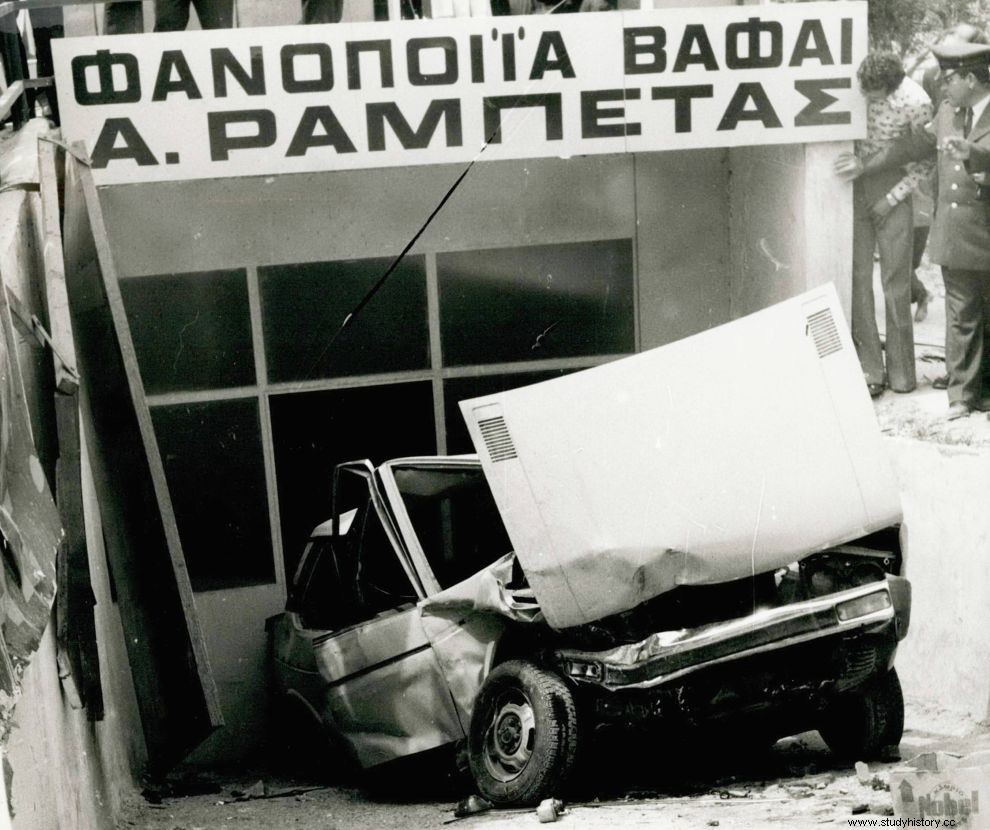
After the ban, Panagoulis escalated his attacks on Averof, whom he considered primarily responsible for the attempt to hide and cover up the truth. Undeterred by Zouvelos' decision, he announced that his intention was, a few days later, to hand over all the documents in his possession to the Parliament. But he did not make it, because death overtook him. In the early hours of May Day 1976, Panagoulis was driving the Fiat Mirafiori - which Falatsi had given him as a gift - on Vouliagmenis Avenue, heading towards Glyfada.
Behind him, at a close distance, were following - according to witnesses - two or three more cars, which were moving at high speed, just like him. At approximately the height of Agios Dimitrios (where today the metro station bearing his name is located) he lost control of the vehicle, which veered off its path and crashed into an underground shop (body shop). A passing taxi driver, along with his passenger, rushed to help and found Panagoulis dying in the back of the Fiat. They took him out of the wrecked car, put him in the taxi, but on the way to the hospital, Alekos Panagoulis was already dead, only 36 years old.
ACCIDENT OR MURDER?

The shock from the news of his death was great throughout Greece, but also abroad. The papers were released the next day divided. The pro-government press was talking about an accident, the opposition about a possible political assassination. Ο εισαγγελέας Δημήτρης Τσεβάς, που ανέλαβε την έρευνα, είχε δηλώσει σχετικά:"Ερευνάται η υπόθεση προς πάσα κατεύθυνση και αφήνει μεγάλα λογικά περιθώρια στην πιθανότητα της εγκληματικής ενέργειας. Είναι περίεργο τροχαίο δυστύχημα. Τόσο περίεργο, ώστε να μην μπορεί κανείς να υποστηρίξει λογικά ότι είναι δυστύχημα".
Ο ίδιος ο πρωθυπουργός, Κωνσταντίνος Καραμανλής, είχε δεσμευτεί για την πλήρη διαλεύκανση της υπόθεσης, η αντιπολίτευση όμως παρουσιαζόταν πολύ επιφυλακτική, ζητώντας να μη μείνει η παραμικρή σκιά. Η πλειοψηφία του απλού κόσμου πίστευε πάντως ότι επρόκειτο για δολοφονία και το έδειξε με τη στάση του, λίγες μέρες μετά, στις 5 Μαΐου, στην κηδεία του εκλιπόντα, που μετατράπηκε σε μια παλλαϊκή συγκέντρωση διαμαρτυρίας, με κεντρικό σύνθημα το ιστορικό πλέον "ο Παναγούλης ζει".
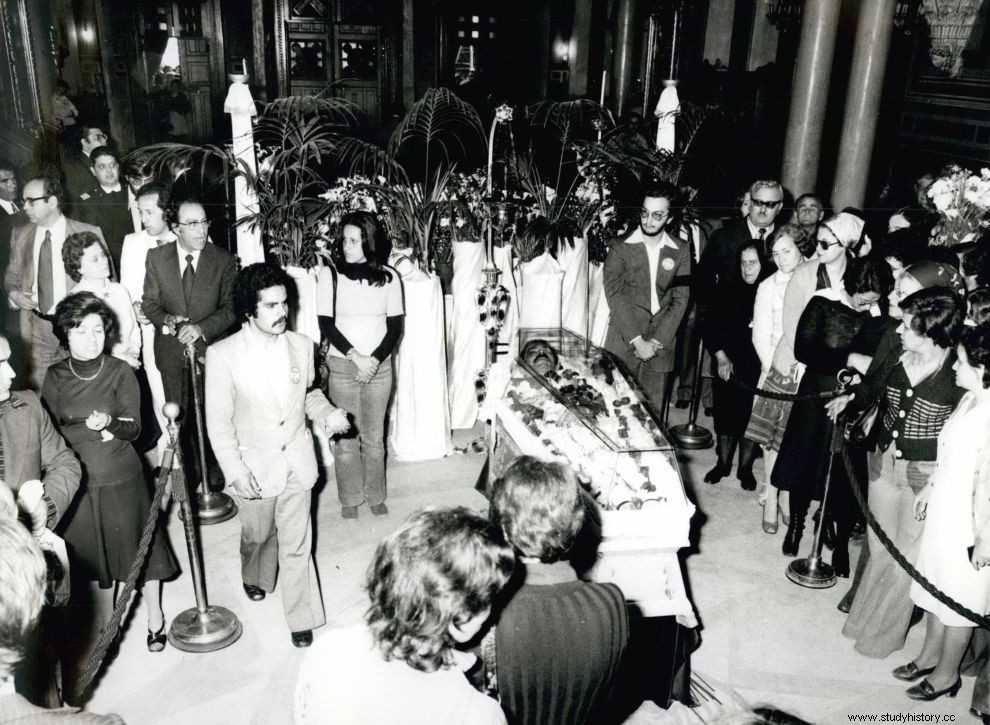
Εκατοντάδες χιλιάδες πολίτες - τα ρεπορτάζ της εποχής μιλούσαν για ένα εκατομμύριο - κατέκλυσαν κάθε γωνιά της διαδρομής από τη Μητρόπολη στο Α' Νεκροταφείο, διαδηλώνοντας την οργή τους για τον χαμό του Παναγούλη, αλλά και τα κατάλοιπα της χούντας, με συνθήματα όπως "Αβέρωφ φασίστα παραιτήσου", "Έξω η ΣΙΑ", "Έξω τώρα οι Αμερικάνοι" και "Ο λαός δεν ξεχνά, οργανώνεται, νικά". Η Οριάνα Φαλάτσι που είχε φτάσει στην Αθήνα λίγες ώρες μετά τον θάνατο του αγαπημένου της, είχε πει συντετριμμένη, "τώρα που σκοτώθηκε ο Αλέκος, θα γεννηθώ εγώ".
Στην κηδεία ήταν παρόντες ο πρόεδρος της Βουλής, Κωνσταντίνος Παπακωνσταντίνου, ο πρόεδρος της ιταλικής βουλής, Σάντρο Περτίνι, ο πρώην πρωθυπουργός Παναγιώτης Κανελλόπουλος, ο πρόεδρος του ΠΑΣΟΚ Ανδρέας Παπανδρέου, ο αρχηγός της ΕΔΗΚ Γεώργιος Μαύρος, ο πρόεδρος της ΕΔΑ Ηλίας Ηλιού, ο Μίκης Θεοδωράκης, ο Μανώλης Γλέζος και πολλοί άλλοι επώνυμοι. Έλαμψαν όμως δια της απουσίας τους, τόσο ο πρωθυπουργός Κ. Καραμανλής, όσο και ο πρόεδρος της Δημοκρατίας Κωνσταντίνος Τσάτσος (θείος του Δ. Τσάτσου, τον οποίο ο Παναγούλης είχε αποκαλέσει προδότη). Επίσης, οι Ένοπλες Δυνάμεις δεν έστειλαν εκπρόσωπό τους.

Στο διάστημα που ακολούθησε, η αστυνομία αναζήτησε τα τρία άγνωστα αυτοκίνητα, που σύμφωνα με αυτόπτες μάρτυρες, είχαν βγάλει από την πορεία του το μοιραίο Fiat. Τέσσερις μέρες μετά το δυστύχημα, παρουσιάστηκε στη Χωροφυλακή ο Μιχάλης Στέφας, ένας 31χρονος βιοτέχνης, λέγοντας ότι ο Παναγούλης είχε χάσει τον έλεγχο του αυτοκινήτου του, μετά από πρόσκρουση στο πίσω δεξί φτερό του δικού του αυτοκινήτου, επιβεβαιώνοντας την εκδοχή του δυστυχήματος. Ισχυρίστηκε μάλιστα ότι τον εγκατέλειψε αβοήθητο, επειδή το όχημά του είχε ξένη πινακίδα, που δεν ίσχυε στην Ελλάδα και φοβήθηκε ότι θα έμπλεκε.
Έναν χρόνο αργότερα, ξεκίνησε η δίκη. Εκεί, η Αθηνά Παναγούλη, μητέρα του Αλέκου, είχε δηλώσει:"Υποτιμώ τη νοημοσύνη ολόκληρης της υφηλίου, αν καταθέσω σε αυτό το δικαστήριο ότι ο γιος μου υπήρξε θύμα τροχαίου. Ήταν δολοφονία. Διέπραξαν ένα καθ' όλα τέλειο έγκλημα". Υπήρχε και η "ενοχλητική" κατάθεση ενός αυτόπτη μάρτυρα που επέμενε για την εμπλοκή στο συμβάν των τριών αυτοκινήτων. Η έδρα επέβαλε τελικά ποινή 3,5 χρόνων στον Στέφα, στην έφεση μειώθηκε στους 11 μήνες φυλάκισης, η οποία εξαγοράστηκε προς 150 δραχμές την ημέρα συν ένα πρόστιμο 3.000 δραχμών. Η οικογένεια Παναγούλη μίλησε για παρωδία και αποχώρησε από το δικαστήριο.
"ΕΝΑΣ ΑΝΔΡΑΣ", ΑΝΤΙ ΕΠΙΛΟΓΟΥ

Τρία χρόνια μετά τη μοιραία Πρωτομαγιά του '76, η Οριάνα Φαλάτσι - που δεν ξεπέρασε ποτέ τον θάνατο του Παναγούλη - έγραψε το βιβλίο "Ένας άνδρας", για το οποίο είχε πει:"Είχε πεθάνει αυτός που αγαπούσα και είχα ξεκινήσει να γράφω ένα μυθιστόρημα που θα έδινε νόημα στην τραγωδία. Για να το γράψω, είχα εξοριστεί σε ένα δωμάτιο του πρώτου πατώματος στο σπίτι μου στην Τοσκάνη και ήταν σαν να έμπαινα σε μια σήραγγα, της οποίας δεν διακρινόταν η άκρη, μια αχτίδα φωτός". Μέσα στο βιβλίο της υπάρχει η φράση, "η τραγωδία ενός ανθρώπου καταδικασμένου να είναι ποιητής, ήρωας και σαν τέτοιος να σταυρώνεται", που περιγράφει με ελάχιστες λέξεις αυτό που υπήρξε ο Παναγούλης.
Ή όπως χαρακτηριστικά είχε γράψει η ίδια η μητέρα του πάνω στο νεκρικό σάβανο:"Ο Αλέξανδρος Παναγούλης καταδικάσθηκε σε θάνατο γιατί έψαξε την ελευθερία. Το 1976 πέθανε γιατί έψαξε την αλήθεια και τη βρήκε". Το σίγουρο είναι ότι ο μεγάλος αυτός αγωνιστής, υπήρξε σύμβολο τόσο ζωντανός, όσο και νεκρός. Με τις πράξεις, τη συνέπεια, τη γενναιότητα, την αυταπάρνηση, την ανυποχώρητη πίστη και αφοσίωσή του στη δημοκρατία, την αλήθεια και τη δικαιοσύνη. Ο Παναγούλης πολιτικός από καθήκον, ο Παναγούλης ποιητής από ανάγκη, όπως είχε πει ο ίδιος, αφήνοντας μια "υπόσχεση" που ποτέ δεν πρέπει να αφήσουμε να ξεθωριάσει:
Τα δάκρυα που στα μάτια μας
θα δείτε ν' αναβρύζουν
ποτέ μην τα πιστέψετε
απελπισιάς σημάδια.
Υπόσχεση είναι μοναχά
γι' αγώνα υπόσχεση.
(Στρατιωτικές φυλακές Μπογιατίου, Φεβρουάριος 1972)
